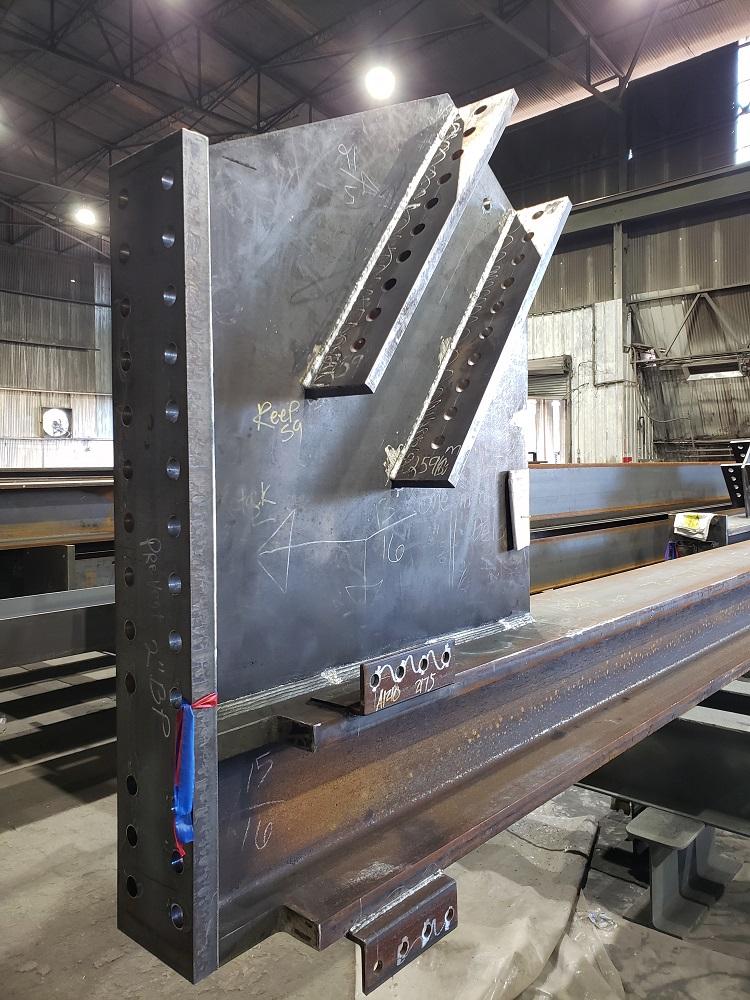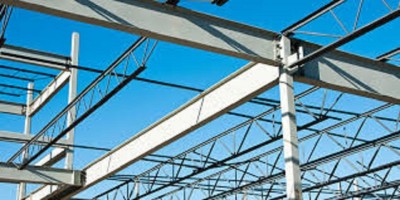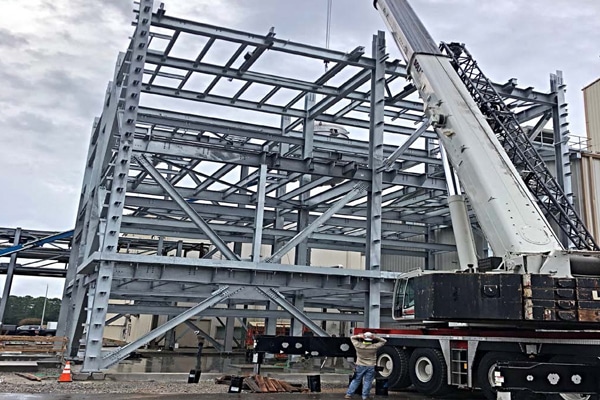Why Alpha Reo Is the Top Selection for Steel Reinforcement
Why Alpha Reo Is the Top Selection for Steel Reinforcement
Blog Article
Innovative Patterns in Steel Construction: Enhancing Resilience and Accuracy
In the realm of steel fabrication, the search of durability and precision has led to a wave of ingenious trends that are improving the market. These fads are not simply shaping the existing but also laying the foundation for the future of steel fabrication, assuring more enhancements in toughness and precision.
Advanced Welding Technologies
In the world of steel construction, the fostering of innovative welding technologies has significantly reinvented the market's method to attaining premium quality and precision in architectural welds. Advanced welding technologies, such as laser beam welding and friction stir welding, have actually become game-changers in the field. Laser beam of light welding employs a focused laser light beam to join metal elements with amazing accuracy and rate, making it suitable for detailed styles and thin products. On the other hand, rubbing mix welding develops extremely strong bonds by mechanically intermixing the molecules of the materials at the joint, eliminating the demand for melting the metal. These modern technologies offer numerous benefits, consisting of lowered heat-affected areas, minimal distortion, and enhanced mechanical residential properties in the welded joints. By leveraging these advanced welding methods, steel makers can raise the longevity, strength, and precision of their structural welds, meeting the progressively demanding demands of contemporary building tasks.
Robot Automation in Construction
Embracing robot automation has become a foundation of modern steel manufacture practices, boosting and improving procedures effectiveness across the sector. Robotics are transforming the way steel elements are produced, offering unparalleled precision and speed while decreasing human error. These automated systems can deal with recurring jobs with regular precision, causing better end items.
One trick advantage of robot automation in steel fabrication is the capacity to work all the time without exhaustion, substantially boosting production outcome. This constant procedure decreases downtime and accelerates job timelines, ultimately conserving expenses for manufacturers. Furthermore, robotics can be programmed to carry out elaborate tasks that might be hazardous or tough for human workers, boosting security in the workplace.
Moreover, robotic automation enables smooth integration with various other digital technologies, such as computer-aided layout (CAD) software and Internet of Things (IoT) systems (steel fixing). This interconnected technique boosts interaction in between different stages of construction, optimizing workflows and making certain real-time tracking and control. As the steel construction market continues to advance, robotic automation stands apart as a transformative force driving effectiveness and accuracy in producing procedures

High-Strength Alloy Development
The development of high-strength alloy development in steel construction is reshaping the industry's method to improving material durability and efficiency. High-strength alloys are engineered to display exceptional mechanical properties, such as boosted tensile toughness, durability, and corrosion resistance compared to conventional steel grades. By integrating these sophisticated alloys right into manufacture procedures, producers can generate elements that endure greater here anxiety degrees and severe atmospheres, resulting in even more dependable and sturdy output.
One secret benefit of high-strength alloy advancement is the capability to lower product density without jeopardizing structural stability. This not only causes lighter-weight parts but likewise contributes to cost financial savings and enhanced performance in manufacture and setting up procedures. Moreover, the improved strength-to-weight proportion of these alloys permits the layout and building and construction of structures with higher load-bearing capabilities while reducing overall weight.
3D Modeling and Simulation Software
Innovations in steel construction processes have been considerably pushed by the integration of cutting-edge 3D modeling and simulation software devices. These tools permit fabricators to produce thorough virtual versions of their jobs, allowing them to visualize the final item with precision before any kind of physical job begins.

Sustainable Practices in Steel Production
Including sustainable methods into steel production processes is necessary for lessening ecological influence and guaranteeing long-lasting source availability. One crucial lasting method is the fostering of energy-efficient technologies to minimize greenhouse gas exhausts during the steel production process. This consists of making use of sustainable power sources, such as solar or wind power, to power steel plants and executing energy-efficient devices to maximize energy usage.
An additional important aspect of lasting steel production is the liable sourcing of raw products. This includes making sure that the iron ore and various other sources made use of in steelmaking are gotten from honest and eco-friendly resources. By advertising openness in the supply chain and sticking to strict ecological requirements, steel manufacturers can reduce the adverse influences of source removal on regional ecological communities and neighborhoods.

Verdict
To conclude, the cutting-edge patterns in steel construction such as advanced welding innovations, robotic automation, high-strength alloy advancement, 3D modeling and simulation software application, and sustainable methods are boosting the sturdiness and precision of steel products. These advancements are changing the steel construction market by enhancing top quality, performance, and sustainability. It is clear that the future of steel construction depends on welcoming these cutting-edge modern technologies to fulfill the needs of modern construction and production sectors.
In the world of steel fabrication, the pursuit of longevity and precision has led to a wave of cutting-edge trends that are reshaping the industry.In the world of steel manufacture, the adoption of sophisticated welding modern technologies has actually substantially changed the sector's technique to accomplishing remarkable top quality and accuracy in architectural welds. As the steel manufacture market continues to advance, robot automation stands out as a transformative force driving efficiency and precision in making processes.
Moreover, reusing and reusing steel scrap and waste materials play a significant function in enhancing the sustainability of steel manufacturing. steel fixing.In final thought, the cutting-edge fads in steel manufacture such as sophisticated welding modern technologies, robot automation, high-strength alloy this page development, 3D modeling and simulation software, and sustainable practices are improving the sturdiness and accuracy of steel products
Report this page